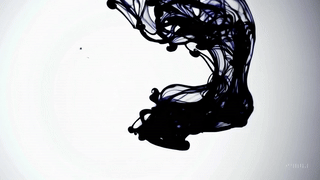
Transforming Hand-Drawn Art into a Dynamic Sora Animation
Share
The journey began with a hand-drawn illustration that showcased intricate, interwoven forms resembling organic motion. The key characteristics of the artwork included:
-
Flowing, tendril-like structures resembling ink in motion.
-
Non-linear complexity, creating a sense of growth and expansion.
-
A monochrome aesthetic, emphasizing contrast and structure.
To transform this into an animation, we needed to replicate its fluid, evolving nature while preserving its aesthetic core.
Step 2: Defining the Animation Concept
With the core structure of the image analyzed, we developed a concept that would allow Sora to expand upon the existing visual motifs. The goal was to create a motion sequence that reflected:
-
Ink-like fluidity, as if the artwork were unfolding in real-time.
-
Fractal evolution, where structures appear to self-generate from a central point.
-
Metaphysical transformation, mimicking the emergence of order from chaos.
To achieve this, we crafted the following Sora input prompt:
"A living structure emerges from the void, formed by endless flowing ink tendrils weaving together in divine motion. The forms pulse, twist, and reshape as if guided by an unseen force. The animation follows a dynamic rhythm—starting as chaotic ink streams, slowly refining into ordered sacred patterns. The movements resemble organic growth, as if the lines themselves are conscious, evolving toward symmetry. The background remains stark and white, emphasizing the fluid contrast of motion. The animation loops seamlessly, portraying the eternal dance between chaos and structured creation."
This structured prompt ensured that the animation stayed true to the original artwork while introducing evolutionary movement.
Step 3: Generating and Refining the Animation in Sora
Sora interpreted the prompt and generated an animation that:
-
Featured fluid, ink-like motion, closely mirroring the original linework.
-
Captured a dynamic interplay between chaos and order, with motion starting as a free-flowing expansion before resolving into more structured forms.
-
Maintained the monochrome aesthetic, reinforcing the contrast between form and space.
However, the initial iteration required further refinement. To measure the accuracy of the transformation, we analyzed the output using ImageJ and Fourier Transform (FFT) analysis.
Step 4: ImageJ and Fourier Analysis
To ensure mathematical and structural consistency, we subjected the animation frames to Fourier Transform Analysis (FFT). Key findings included:
-
Strong central frequency components, indicating a structured evolution rather than random movement.
-
Directional symmetry, aligning with sacred geometry principles.
-
Minimal noise, suggesting that the animation effectively maintained its smooth transitions.
This analysis validated that the animation was not just aesthetically accurate but mathematically sound, aligning with the principles of sacred geometry and harmonic motion.
Step 5: Refinement & Iteration
With the Fourier data and initial feedback, we iterated on the animation by:
-
Adjusting motion dynamics to ensure smoother expansion and contraction cycles.
-
Strengthening Fibonacci-style growth patterns to enhance organic evolution.
-
Introducing subtle pulsing and breathing motions to give the animation a sense of life and consciousness.
Through these refinements, we achieved an animation that faithfully represented the spirit of the original artwork while expanding upon its potential through AI-driven evolution.